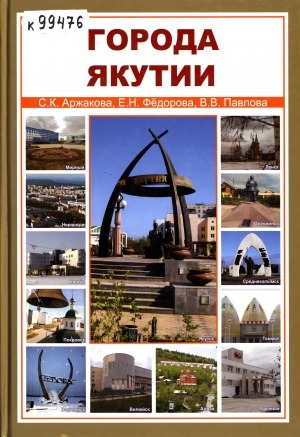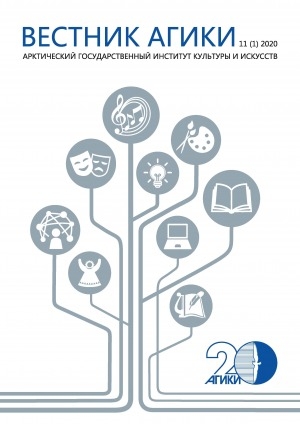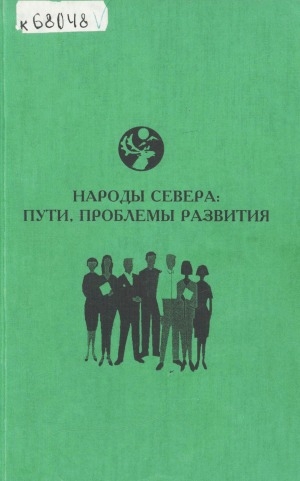Arctic region of Russia at the 1900 World Exhibition / V. Serkova, V. Lobastova, T. Simonenko [etc.] // Purpose-Led Publishing. - 2019. - N 302. - P. 1-5. URL: https://iopscience.iop.org/article/10.1088/1755-1315/302/1/012036/pdf (дата обращения: 30.10.2024). - References: p. 5 (9 titles). - Russia's participation in the World Exhibitions reflected the self-identification of Russia and expressed the desire to present the country as a strong power, inscribed in the context of World development and interaction. Of particular importance for the demonstration of the technical power of Russia and its achievements in various areas of culture was the World Exhibition of 1900 in Paris. One of the central pavilions of the Russian department of the exhibition was the Pavilion of the Russian outskirts devoted to various topics from the life of the peoples of the Caucasus, Central Asia, Siberia, and the development of the Far North. This article discusses the features of the exhibition, representing the uniqueness of the North, its nature, ancient monuments, and the life of the northern peoples of the Russian Empire. It was represented by the huge panels made by Russian artist Konstantin Korovin. At the turn of the century, at the time of heightened interest in the Arctic from scientists, researchers, writers and artists, Korovin repeatedly made trips to the Russian North, which every time made a huge impression on him, which radically changed the artist’s stylistic style, allowed him to improve the technique of creating extensive panel, to prove himself as a decorative artist. The article concludes that the participation of Konstantin Korovin in the organization of the exhibition not only brought great benefits in the organization of the World Exhibition in Paris, but also turned out to be his greatest creative success. The exhibition in Paris in 1900 testified that Russia was developing rapidly at the time; it ceased to be exotic and incomprehensible and revealed its national identity. - Участие России во Всемирных выставках отражало самоидентификацию России и выразило стремление представить страну как сильную державу, вписанную в контекст мирового развития и взаимодействия. Особое значение для демонстрации технической мощи России и ее достижений в различных областях культуры была Всемирная выставка 1900 года в Париже. Одним из центральных павильонов русского отдела выставки был павильон Окраины России, посвященный различным темам из жизни народов Кавказа, Средней Азии, Сибири и освоения Крайнего Севера. В этой статье рассматриваются особенности выставки, представляющей уникальность Севера, его природу, древние памятники и быт северных народов Российской империи. Она была представлена огромными панно, выполненными русским художником Константина Коровина. На рубеже веков, в период повышенного интереса к Арктике со стороны ученых, исследователей, писателей и художников, Коровин неоднократно совершал поездки на Русский Север, которые каждый раз производили на него огромное впечатление, что в корне изменило стилистику художника, позволило ему усовершенствовать технику создания объемных панно, проявить себя как декоративный художника. В статье делается вывод о том, что участие Константина Коровина в организации выставки не только принесло большую пользу в организации Всемирной выставки в Париже, но и оказалось его самой большой творческой удачей. Выставка в Париже в 1900 году свидетельствовала о том, что Россия в то время стремительно развивалась, перестала быть экзотической и непонятной и раскрыла свою национальную самобытность.



![Обложка Электронного документа: Саха баайа Георгий Терешкин: [меценат туһунан, Сунтаар улууһа]](/_next/image?url=https%3A%2F%2Fe.nlrs.ru%2Fimgs%2Fcovers%2F120282.jpg&w=640&q=100)
![Обложка Электронного документа: По следам забытых выставок: [об участии Якутской области в крупных всемирных и всероссийских выставках (1867-1913)]](/_next/image?url=https%3A%2F%2Fe.nlrs.ru%2Fimgs%2Fcovers%2F120285.jpg&w=640&q=100)
![Обложка Электронного документа: [Класс 50. Якутский Губернатор – Продукты лесного хозяйства и образцы известных лесных пород... : раздел из книги “Россия на Всемирной Выставке 1900 г.”]](/_next/image?url=https%3A%2F%2Fe.nlrs.ru%2Fimgs%2Fcovers%2F120294.jpg&w=640&q=100)
![Обложка Электронного документа: Россия на Всемирной выставке 1900 года в Париже: [глава из книги “Модернизм как архаизм. Национализм и поиски модернистской эстетики в России”]](/_next/image?url=https%3A%2F%2Fe.nlrs.ru%2Fimgs%2Fcovers%2F120295.jpg&w=640&q=100)







